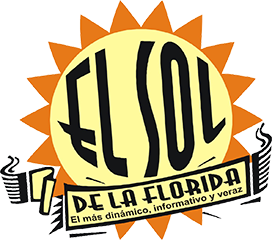Scott Bomboy |
With the current presidential campaign in the news, some people have questioned how late-breaking developments will affect the election’s outcome in November. But in some cases, a considerable number of votes will already have been cast before November 8, and by one estimate, nearly a half million votes for president are in the books as of October 11, thanks to the early voting process.
On Tuesday, CNN reported that it had obtained basic early voting participation data from 27 states, where 455,878 votes had been cast by absentee ballot or in person, with most votes cast before this past weekend.
Early voting has become an important factor in modern times. The Associated Press estimates in 2016 that about 40 percent of all votes will be cast before Election Day this year. It also estimates early voting in the 2012 election was at about a 35 percent rate.
The National Conference of State Legislatures says 37 states and the District of Columbia will allow early voting in 2016 with no excuses or justification required. The group also says that all 50 states and the federal district allow absentee voting, and some 20 states require a reason for that request. And three states – Colorado, Oregon and Washington – mail ballots to all eligible voters.
The concept of early voting is not without controversy. Supporters believe it expands the franchise to more voters who don’t have easy access to polls; objectors think the early voters don’t have a full set of facts to work with in making critical decisions.
This year, the first official voters in the presidential election already voted in person about 46 days before Election Day. On September 23, 2016, eligible voters in Minnesota were able to vote in person at a Minneapolis polling location for the general election. On that same day, the state accepted absentee ballot requests that didn’t require an excuse for absentee voting.
The Constitution spells out that Congress has the power to set the date for a national Election Day. In Article II, Section 1, Clause 4, says that, “the Congress may determine the Time of [choosing] the Electors, and the Day on which they shall give their Votes; which Day shall be the same throughout the United States.” But under state laws, votes can be cast before the official in-person Election Day, to be added to the final tally.
The concept goes back to the Civil War, when military members were among the first people allowed to cast absentee ballots in elections, under state laws. In the 1880s, the Australian or secret ballot changed how elections were conducted, and in the following years, different states instituted absentee voting systems.
By the early 1960s, most states had some form of absentee voting system that allowed eligible voters to cast votes without being at their normal designated polling place on Election Day. The Voting Rights Act of 1970 provided additional protection to absentee voters. But in these cases, voters had to provide a reason for why they couldn’t vote in person at their home polling location.
In 1978, California became the first state to pass a “no-excuses” absentee voting law. And in the 1980s, Oregon introduced a vote-by-mail system where all eligible voters received a ballot that could be returned via the mail or dropped off at a location. By the time of the 2004 general election, Texas, Tennessee and Nevada reported that about 40 percent of their ballots were cast by early voters.
Among the swing states in the 2016 election, only Michigan, New Hampshire, Pennsylvania and Virginia forbid some type of early voting or no-excuse absentee voting. Colorado, Florida, Iowa, Ohio, Nevada and Wisconsin permit early voting, no-excuse absentee voting or voting by mail.
Statistics from the 2012 general election show the growing importance of early and absentee voting. According to the Brennan Center, during the 2012 election the states of Texas (62.4 percent), Nevada (60.8 percent), North Carolina (56.3 percent), Georgia (43.8 percent) and Florida (28.2 percent) had high rates of early voting participation, compared to the national average of 14 percent.
Scott Bomboy is editor in chief of the National Constitution Center.


